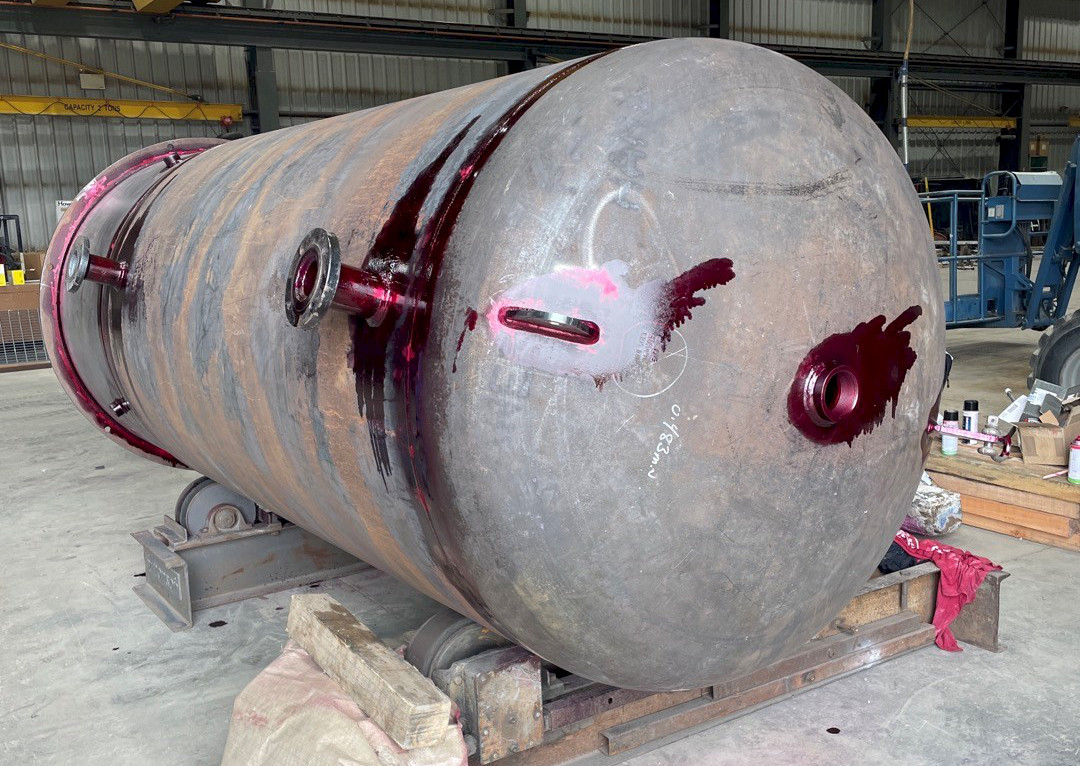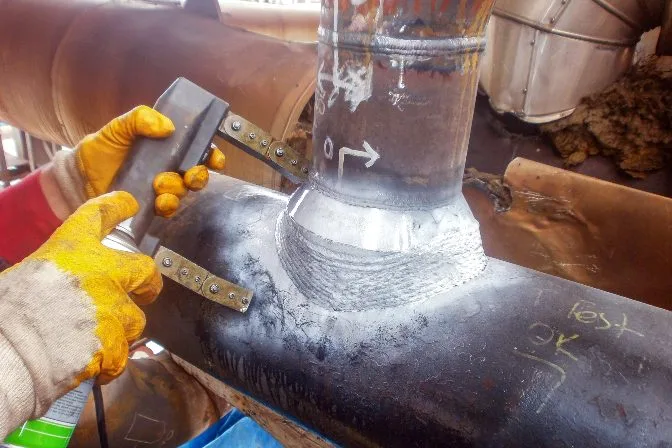An In-depth Introduction of Container Welding Examination Requirements and Methodologies for Improved Weld Quality and Performance
The significance of welding assessment criteria in the manufacturing of storage tanks can not be overstated, as they offer as the backbone for making certain weld honesty and functional reliability. Different assessment methods, consisting of aesthetic analyses and progressed non-destructive screening techniques, are critical in recognizing possible problems that might compromise efficiency.
Significance of Welding Examination Specifications

Welding inspection requirements encompass an array of standards, consisting of product specifications, welding procedures, and credentials of personnel entailed in the welding process. By enforcing these requirements, companies can systematically identify and rectify possible issues, thus minimizing the chance of pricey fixings or tragic failings. Extensive inspection practices promote a society of responsibility and precision, urging welders to keep high degrees of craftsmanship.

Usual Welding Examination Strategies


Ultrasonic Checking (UT) is an additional prevalent technique, utilizing high-frequency audio waves to find inner imperfections that might not show up on the surface. This method is particularly effective for identifying spaces or additions within the weld steel. Magnetic Fragment Testing (MT) is additionally extensively made use of, especially for ferromagnetic products, as it reveals surface and near-surface defects via the application of electromagnetic fields and ferrous bits.
Additionally, Fluid Penetrant Screening (PT) spots surface-breaking defects by using a penetrant to the weld and then making use of a developer to attract out the penetrant. Each of these strategies adds to a thorough inspection method, making sure that welds meet the stringent quality standards needed in container building and construction.
Governing Criteria and Compliance
Governing standards and conformity are necessary parts in guaranteeing the security and reliability of bonded structures in container building - Tank Welding Inspection. These requirements serve to establish minimum needs for product residential or commercial properties, welding procedures, and inspection practices, thereby lowering the risk of architectural reference failures and improving general efficiency
Secret organizations, such as the American Society of Mechanical Designers (ASME) and the American Welding Culture (AWS), supply guidelines that are commonly taken on in the market. Compliance with these standards not just makes sure adherence to ideal methods however likewise fulfills legal and contractual obligations, safeguarding the passions of stakeholders.
Governing bodies often mandate adherence to certain codes, such as ASME Code Area IX for welding qualifications and API 650 for welded storage tanks. These codes outline requirements for welding techniques, credentials of employees, and testing approaches to validate weld honesty.
Normal audits and inspections are vital to keeping conformity, as they aid recognize discrepancies from developed standards. Non-compliance can result in significant penalties, task delays, and safety hazards. Hence, a durable understanding of regulative standards and a commitment to compliance are critical in accomplishing top quality and resilient official statement welded tank structures.
Non-Destructive Testing Methods
How can the honesty of welded structures be ensured without triggering damages? Non-destructive testing (NDT) methods supply a durable option, enabling examiners to assess weld high quality without jeopardizing the product - Tank Welding Inspection. Amongst the most typical NDT techniques are ultrasonic testing (UT), radiographic testing (RT), magnetic particle screening (MT), and color penetrant screening (PT)
Radiographic testing includes passing X-rays or gamma rays via the weld, producing pictures that reveal structural issues such as splits or spaces. This technique is indispensable for analyzing the integrity of intricate welds.
Magnetic fragment screening is matched for ferromagnetic products, where magnetic areas disclose surface area and near-surface gaps. Dye penetrant screening utilizes a fluid color to highlight surface-breaking problems, making it an effective approach for non-porous materials.
Each of these NDT approaches has distinctive benefits, enabling thorough assessments tailored to certain products and welding procedures. By implementing these strategies, markets can guarantee the integrity and security of bonded structures, eventually boosting overall efficiency.
Enhancing Weld Quality With Evaluation
Efficient assessment plays a vital role in enhancing weld top quality, offering as an important checkpoint in the manufacture procedure. By determining prospective problems early, evaluations alleviate the threat of compromised structural integrity and guarantee compliance with sector requirements. Using a mix of visual examinations, non-destructive testing (NDT) techniques, and mechanical analyses, assessors can spot concerns such as porosity, cracks, and insufficient blend.
Carrying out a robust examination method not just improves the overall top quality of welds however additionally cultivates a culture of accountability amongst welders and fabricators. Routine training and accreditation of evaluation workers ensure that they are equipped with the necessary abilities to acknowledge and deal with possible issues effectively. This aggressive technique lessens rework and associated prices, eventually adding to forecast efficiency.
Furthermore, extensive documentation of examination findings supplies important understandings right into recurring concerns, assisting in constant enhancement in welding methods. By leveraging advanced modern technologies, such as automated ultrasonic screening or electronic radiography, weld high quality can be improved through a lot more accurate assessments. In conclusion, an extensive evaluation procedure is indispensable in achieving high-quality welds, guaranteeing safety, integrity, and durability in tank construction.
Final Thought
In conclusion, the implementation of extensive container welding assessment requirements and methods is essential for guaranteeing weld honesty and performance. By utilizing a mix of visual examinations, non-destructive screening techniques, and more info here adherence to regulative requirements, organizations can properly recognize and reduce prospective problems. Promoting a society of accountability among welders additionally improves the top quality of welding procedures. Eventually, these practices add to decreased architectural failings, reduced fixing prices, and enhanced functional effectiveness within the sector.